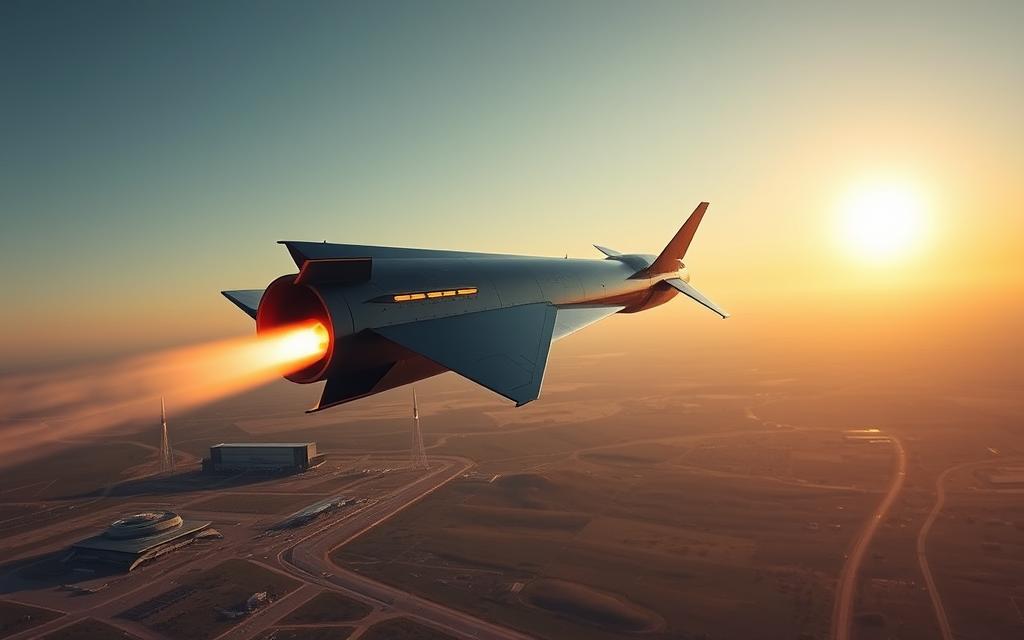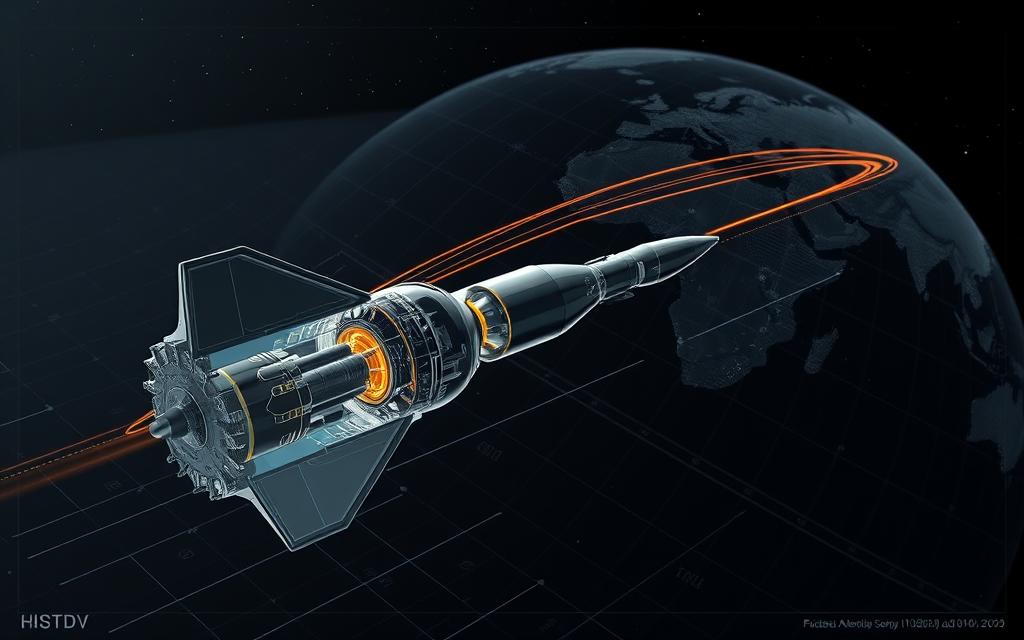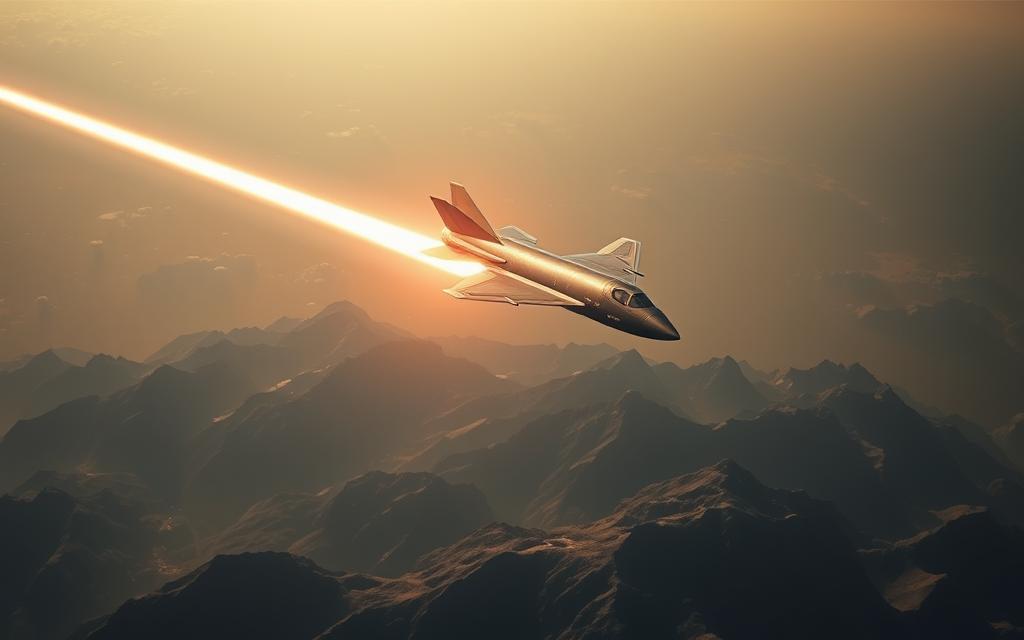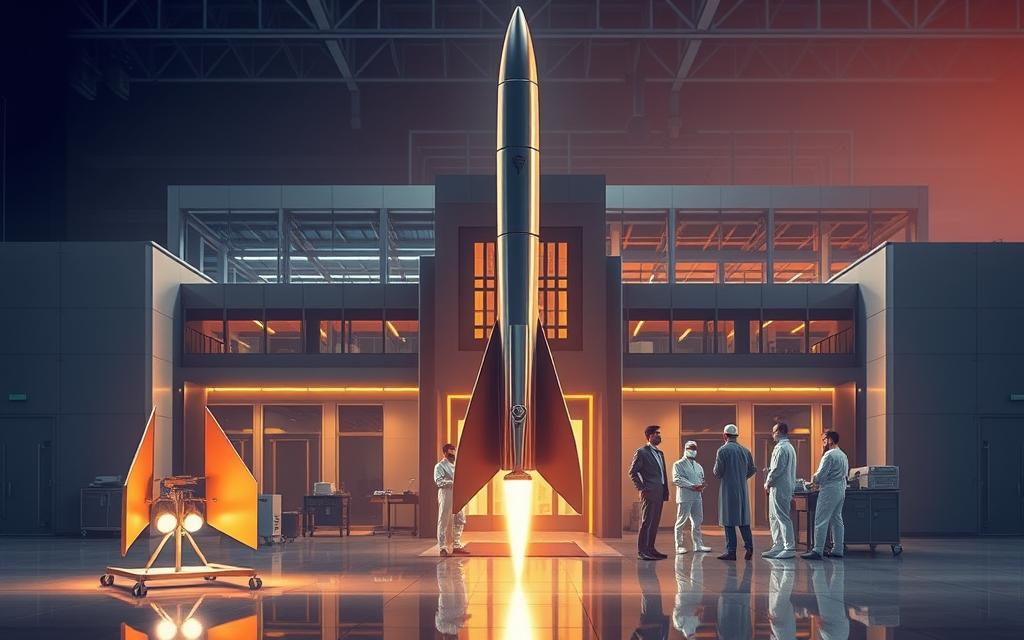In November 2023, defence authorities announced a breakthrough test of indigenous weaponry. This test showed the technology can travel at six times the speed of sound. This achievement puts India among a few global powers with hypersonic propulsion systems.
The Defence Research and Development Organisation (DRDO) confirmed the technology’s range is over 1,500 kilometres. The DRDO hypersonic programme uses scramjet technology and advanced navigation. It was shown through the HSTDV test platform.
Defence Minister Rajnath Singh said these achievements mark a big change in strategic deterrence. He noted the payload capacities are good for both conventional and specialised warheads.
This progress comes as China shows off its GDF-600 hypersonic glide vehicle. Yet, there are big differences. India’s BrahMos-II collaboration with Russia is about manoeuvrable cruise missiles, not ballistic trajectories.
Military strategists say these developments could change how we think about security. Being able to hit targets quickly in minutes changes how we manage conflicts. This is because new defence systems against hypersonic missiles are being developed around the world.
Understanding Hypersonic Weapons Technology
Hypersonic weapons are changing the game in military tech. They go at speeds over Mach 5, which is five times the speed of sound. This makes them much faster than old defence systems.
Defining Hypersonic Speed and Key Characteristics
The Mach 5+ threshold is not just about speed. It also brings unique challenges. The UK Parliament’s Defence Committee says hypersonic travel makes plasma clouds. These need special protection systems.
Mach 5+ Threshold and Atmospheric Challenges
At these speeds, air around the vehicle ionises. This creates:
- Surface temperatures over 2,000°C
- Signal blackout for guidance systems
- Structural stress from fast acceleration
India’s Defence Research and Development Organisation (DRDO) has made a big step. They’ve shown scramjet technology can burn for 20 seconds. This is key for hypersonic flight.
Types of Hypersonic Delivery Systems
There are two main types of hypersonic weapons:
Hypersonic Glide Vehicles vs Cruise Missiles
| Characteristic | Hypersonic Glide Vehicle | Cruise Missile |
|---|---|---|
| Launch Method | Ballistic missile boost | Air/ground launch |
| Speed Range | Mach 5-20 | Mach 5-7 |
| Manoeuvrability | Glides with course adjustments | Sustained propulsion |
| Example | China’s DF-17 | Russia’s 3M22 Zircon |
Strategic Advantages in Modern Warfare
Hypersonic weapons make old missile defence systems useless. They do this by:
- Being harder to detect for radar
- Having unpredictable flight paths
- Having impact energy like tactical nukes
Penetration of Air Defence Systems
China’s DF-17 hypersonic glide vehicle shows this power. It uses a ballistic missile booster and a warhead that can change direction. This beats:
- Satellite early warning systems
- Interceptor missile response times
- Radar limits
The 2021 China Military Power Report says DF-17s can hit aircraft carrier groups 1,800km away in 12 minutes. This is faster than most defence groups can react.
India’s Hypersonic Weapons Programme Status
India is working hard to develop hypersonic weapons. It’s doing this by combining its own ideas with help from other countries. The Defence Research and Development Organisation (DRDO) is leading the charge. It’s getting support from the budget and agreements to share technology.

DRDO’s Hypersonic Technology Development
The DRDO started the Hypersonic Technology Demonstrator Vehicle (HSTDV) programme in 2004. Dr V.K. Saraswat was in charge then. In 2010, he said, “Hypersonics will redefine our deterrence posture”. This statement really pushed India’s research forward.
Timeline of Indigenous Research Initiatives
- 2007: First scramjet combustor tests
- 2016: Successful 5-second sustained hypersonic flight
- 2020: Landmark HSTDV test reaching Mach 6
Collaboration With International Partners
India’s defence collaboration with Russia is very important. The BrahMos Aerospace joint venture helps a lot. They are also talking about getting Sarmat ICBM technology.
Russian Technological Input and Knowledge Transfer
Here are some key Russian contributions:
- Advanced thermal protection systems
- Hypersonic wind tunnel data sharing
- Composite material development support
Government Funding and Strategic Priorities
India is spending more on hypersonic research funding. The 2023-24 defence budget has ₹842 crore for hypersonic systems.
Defence Budget Allocation Analysis
| Financial Year | Hypersonic Allocation (₹ crore) | % of Missile Tech Budget |
|---|---|---|
| 2021-22 | 315 | 4.2% |
| 2022-23 | 578 | 6.8% |
| 2023-24 | 842 | 9.1% |
Key Indian Hypersonic Projects
India is working on three main hypersonic projects. Each tackles different technical and strategic challenges. The Defence Research and Development Organisation (DRDO) is leading these efforts. They focus on mastering hypersonic flight, propulsion, and payload delivery.
HSTDV (Hypersonic Technology Demonstrator Vehicle)
The Hypersonic Technology Demonstrator Vehicle is India’s first scramjet-powered system. In 2020, it hit a major milestone. It stayed at Mach 6 for 20 seconds at 30 km high.
2020 Test Launch and Technical Specifications
Here are some key details from the test:
- Scramjet ignition at Mach 3 using solid booster rockets
- 1,000-second ground test for thermal management systems
- Carbon-carbon composites for heat shielding
DRDO scientists have made scramjet operation times longer. They worked with the Indian Institute of Science to solve early issues.
BrahMos-II Supersonic Cruise Missile Development
The BrahMos-II aims to be the world’s fastest cruise missile. It’s a joint project with Russia. They’re aiming for Mach 7 with new airframe designs and fuel systems.
Projected Mach 7 Capabilities and Timeline
They’re working on several things:
- Advanced ramjet-scramjet hybrid propulsion (2023-2025)
- Hypersonic wind tunnel testing (2024-2026)
- BrahMos-NG variant integration with Zorawar light tanks (2025-2027)
Engineers are tackling big challenges. They need to keep the structure strong during long hypersonic flights. This is key for the BrahMos-NG’s small airframe.
Shaurya Missile System Enhancements
The Shaurya missile is getting a hypersonic upgrade. Recent tests showed it can travel 1,900 km. This is 40% further than before.
Hypersonic Upgrade Possibilities
DRDO has plans for the Shaurya:
- Deployable hypersonic glide vehicles (HGVs) by 2026
- Adaptive flight control systems for unpredictable paths
- Silicon carbide-based thermal protection for re-entry
DRDO’s Dr G. Kamat said: “Our prototypes already glide for over 400 seconds. This is a big step towards operational hypersonic systems in 36 months.”
Recent Testing Milestones and Technical Challenges
India’s hypersonic weapons programme has seen big breakthroughs but also faced tough engineering hurdles. The mix of new test data and ongoing technical issues shows both the progress and the gaps in this cutting-edge technology.

September 2020 HSTDV Flight Test Analysis
The Defence Research and Development Organisation (DRDO) hit a major milestone with scramjet ignition at Mach 6. This was Asia’s first time demonstrating hypersonic combustion. The 22-second flight was short of China’s 400-second mark but proved key navigation algorithms work under plasma blackout.
Scramjet Performance and Duration Achievements
The test showed several important results:
- It confirmed air-breathing propulsion works above Mach 5.5
- It proved data can be sent through plasma interference
- It showed how to manage heat with a conical nose tip
Material Science Hurdles in Sustained Hypersonic Flight
The 2023 Sudarshan Chakra project by DRDO tackles thermal protection system issues with new carbon-carbon composites. Current materials can handle 2,500°C for 90 seconds, good for tactical missiles but not long enough for strategic ones needing 10 minutes.
Thermal Protection System Development
Improvements from the Advanced Towed Artillery Gun System (ATAGS) programme have been made:
- Multi-layer ceramic matrix insulation
- Active cooling channel setups
- Sensor-based monitoring of ablation rates
Guidance and Control System Complexities
India’s biggest challenge is keeping terminal phase accuracy during plasma blackout. The 2020 HSTDV test showed navigation drift of over 150 metres in radiofrequency-denied areas, making precision strikes hard.
Manoeuvrability at Extreme Speeds
DRDO’s prototype can make 8G turns at Mach 7, less than Russia’s Avangard system. Current work aims at:
- Penetrating plasma sheaths with millimetre-wave radar
- Improving trajectory prediction with AI
- Creating smaller inertial measurement units
Global Hypersonic Capabilities Comparison
The race for hypersonic dominance has changed military strategies worldwide. Leading powers are investing in new technologies. India’s progress is being watched closely against the US, China, and Russia. This analysis looks at the tech milestones and geopolitical effects on Asia’s security.
United States Hypersonic Development Programmes
The Pentagon is facing criticism for US hypersonic lag compared to rivals. Lockheed Martin is working on two different hypersonic projects:
Lockheed Martin ARRW vs HAWC Systems
- ARRW: A boost-glide vehicle that can reach Mach 20
- HAWC: A scramjet-powered cruise missile for precise strikes
A 2023 Department of Defence report said China is ahead in deploying hypersonic systems. This has led to faster testing for the US. India is also making progress in hypersonic missiles, combining local research with international partnerships.
Chinese DF-ZF Glider Advancements
China’s DF-ZF hypersonic glide vehicle has hit Mach 10 speeds in tests. The 2023 DF-27 missile test showed it could strike over 5,000 km away, avoiding regional defences.
Operational Deployment Status Assessment
| System | Launch Platform | Warhead Type | Deployment Status |
|---|---|---|---|
| DF-ZF | Ballistic Missiles | Conventional/Nuclear | Active Service |
| DF-27 | Mobile Launchers | Hypersonic Glide | Testing Phase |
Russian Avangard System Combat Readiness
Russia’s Avangard deployment on Sarmat ICBMs is a big change. It has hit Mach 27 speeds in tests. Its performance in Ukraine is secret, but analysts say:
Strategic Implications for India
- Reduced warning time for conventional missile defences
- Increased need for space-based tracking systems
- Potential technology transfer restrictions
As global powers improve their hypersonic arsenals, India has tough choices. It must decide between self-reliance and strategic partnerships. India’s non-alignment stance is different from AUKUS members’ technology-sharing, posing challenges for regional deterrence.
Technological and Infrastructural Challenges
India’s plans for hypersonic technology face big technical hurdles. These need new solutions and ongoing investment. Despite progress, like with the HSTDV project, three main areas need quick action to reach operational readiness.

Critical Dependence on Foreign Components
The BrahMos-NG missile shows India’s need for imported parts. This includes advanced guidance modules and thermal protection materials. Sanctions have pushed back testing by 14-18 months, as the 2023 DRDO report shows.
Import Restrictions and Supply Chain Issues
HTNP’s HGV-202F project hit a snag when Russian scramjet parts stopped coming after 2022. Engineers had to change 37% of the system using Indian parts, as L&T’s Zorawar paper explains.
Wind Tunnel Testing Limitations
India has only two wind tunnels for Mach 6 tests, unlike China’s 15. This gap slows down testing, adding 20-25% to development time.
Comparison With Chinese Testing Infrastructure
| Capability | India | China |
|---|---|---|
| Max Test Speed | Mach 8 | Mach 12 |
| Annual Test Capacity | 120 hours | 800 hours |
| High-Enthalpy Facilities | 1 | 7 |
Skilled Workforce Development Requirements
DRDO’s recruitment faces a 42% gap in hypersonic aerodynamics specialists, a 2024 report found. This shortage is due to few postgraduate courses in high-speed physics.
Academic-Industry Collaboration Needs
The AMCA programme shows how to share knowledge between IIT Kanpur and Tata Advanced Systems. It includes:
- Industry-funded PhDs in propulsion systems
- Shared testing facilities with HAL
- Virtual reality training for scramjet maintenance
To overcome these hurdles, government labs, private companies, and universities must work together. Investing in making things in India and training more people will help India keep up in the hypersonic race.
Strategic Implications for Regional Security
India’s work on hypersonic technology is changing how defence works in South Asia. This change is affecting alliances and how conflicts are fought.

Nuclear Deterrence Calculus in South Asia
Hypersonic systems are making old nuclear defence plans outdated. Pakistan says it has a CM-400AKG missile that can go fast. But, experts say it’s not as quick as claimed.
Pakistan’s Response and Countermeasures
Islamabad has been testing missiles a lot, focusing on short-range ones. This is because of worries about India’s quick attacks. But, Pakistan’s budget and tech gaps make it hard to keep up with India’s speed.
Impact on India-China Border Disputes
The Line of Actual Control is getting more tense with hypersonic tech. China’s big projects, like airbases, are facing new threats. The 2020 Galwan clash showed how volatile these areas are.
High-Altitude Warfare Considerations
High mountains make it hard for missiles to work well. But, hypersonic tech can overcome this. India’s work on scramjet tech could make its attacks faster and more precise.
Quad Alliance Dynamics and Technology Sharing
The Quad security dialogue is getting stronger. Countries are working together on defence projects. India’s hypersonic tech could lead to new partnerships and research.
US-India Defence Cooperation Prospects
There are new deals for sharing tech, like sensors and materials. The US is making it easier to work together. But, there are worries about who owns the tech.
Conclusion
India’s work on hypersonic weapons is a big step forward in defence. The Agni-V MIRV test shows India’s growing skill in technology. This move is in line with the Modi government’s aim for a strong defence.
India is now among the top countries in the hypersonic race. The HSTDV and BrahMos-II projects are key to this success. But, India faces challenges like material science hurdles and relying on foreign parts.
India needs to keep investing in research and development. Working with other countries could help, but managing technology sharing is key. This is important for India’s growth in hypersonic technology.
Hypersonic weapons change how we think about security in South Asia. They add to the tension between India and China. The region’s security plans might need to change to keep up with these fast weapons.
India’s progress in hypersonic tech is watched closely by the world. It’s important for India to be open about its advancements. This could help avoid misunderstandings and keep the region stable.
India’s journey in hypersonic tech is just starting. It must balance its military upgrades with talks on not spreading dangerous weapons. This balance is key to keeping peace in the region.







